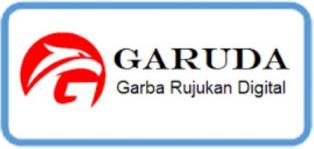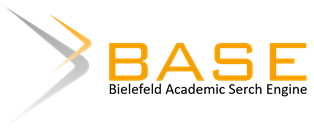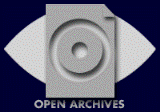Analisis Computational Thinking Skill yang Mempengaruhi Penggunaan Augmented Reality dengan Pendekatan TAM
 ), Hendra Hidayat(2),
), Hendra Hidayat(2), (1) Universitas Negeri Padang
(2) Universitas Negeri Padang
 Corresponding Author
Corresponding Author
DOI : https://doi.org/10.24036/voteteknika.v11i4.124684
Full Text:
 Language : id
Language : id
Abstract
Kemajuan teknologi komunikasi telah mengubah segala aspek kehidupan saat ini. Saat ini kemajuan teknologi berkembang pesat menuju era digital global, termasuk di ranah pendidikan. Namun, walaupun teknologi seperti smartphone telah tersebar luas, siswa seringkali menggunakannya lebih banyak digunakan bermain game online dan media sosial, mengakibatkan efektivitas pembelajaran menurun. Penelitian ini bertujuan untuk mengidentifikasi bagaimana reaksi siswa SMKN 1 Padang merespon teknologi baru, yaitu Augmented Reality (AR), yang akan diimplementasikan dalam proses pembelajaran dasar. AR adalah teknologi yang menggabungkan unsur-unsur dari dunia nyata dengan dunia virtual dengan cara mewakili objek dalam bentuk tiga dimensi. Metode pendekatan dalam penelitian ini adalah (Technology Acceptance Model/TAM). Dalam penelitian ini data bersifat kuantitatif dan melibatkan analisis deskriptif, validitas, reliabilitas, serta pengujian hipotesis menggunakan aplikasi Smart PLS3. Data yang telah dianalisis menunjukkan bahwa adanya pengaruh tingkat Computational Thinking Skill siswa terhadap kemudahan dalam menggunakan teknologi (Perceived Ease of Use), adanya pengaruh kemudahan dalam menggunakan teknologi (Perceived Ease of Use) terhadap manfaat teknologi (Perceived Usefulness), dan adanya pengaruh kemudahan alam menggunakan teknologi (Perceived Ease of Use) terhadap penggunaan secara nyata/aktual teknologi (Actual System Use) menggunakan teknologi Augmented Reality.
Kata kunci : Computational Thinking Sikll, Augmented Reality, Technology Acceptance Model
The progress of technology and communication has transformed every aspect of contemporary life. Currently, technological advancement is rapidly moving towards the global digital era, including within the realm of education. However, despite the widespread dissemination of technologies like smartphones, students often use them more for playing online games and engaging in social media, resulting in a decline in the effectiveness of the learning process. This research aims to identify how students at SMKN 1 Padang respond to a new technology, Augmented Reality (AR), which will be implemented in the basic learning process. AR is a technology that combines elements from the real world with the virtual world by representing objects in a three-dimensional form. The methodological approach employed in this study is the Technology Acceptance Model (TAM). In this research, the data is quantitative and involves descriptive analysis, validity, reliability, as well as hypothesis testing using the Smart PLS3 application. The analyzed data indicates an influence of students' Computational Thinking Skill levels on Perceived Ease of Use, an influence of Perceived Ease of Use on Perceived Usefulness, and an influence of Perceived Ease of Use on the actual usage of Augmented Reality technology.
Keywords: Computational Thinking Sikll, Augmented Reality, Technology Acceptance Model
References
Wahyuni, D. (2020). Meningkatkan Pembelajaran Sastra Melalui Perkembangan Era Digital. 7(1), 1–10. https://doi.org/10.24114/kultura.v1i1.18268
Akbar, A., & Noviani, N. (2019). Tantangan dan Solusi dalam Perkembangan Teknologi Pendidikan di Indonesia. 2(1), 18–25. https://jurnal.univpgri-palembang.ac.id/index.php/Prosidingpps/article/view/2927
Lince, L. (2022). Implementasi Kurikulum Merdeka untuk Meningkatkan Motivasi Belajar pada Sekolah Menengah Kejuruan Pusat Keunggulan. 1(1), 38–49. https://doi.org/10.47435/sentikjar.v1i0.829
Meilindawati, R., Hidayah, I. (2023). Penerapan Media Pembelajaran Augmented Reality (AR) Dalam Pembelajaran Matematika. 9(1), 55–62. https://ejournal.umpri.ac.id/index.php/edumath/article/view/1941
Gotama, J. D., Fernando, Y., & Pasha, D. (2021). Pengenalan Gedung Universitas Teknokrat Indonesia Berbasis Augmented Reality. 2(1), 28–38. https://ejournal.umpri.ac.id/index.php/edumath/article/view/1941
Salloum, S. A., Qasim Mohammad Alhamad, A., Al-Emran, M., Abdel Monem, A., & Shaalan, K. (2019). Exploring Students’ Acceptance of E-Learning Through The Development of A Comprehensive Technology Acceptance Model. 7, 128445–128462.https://doi.org/10.1109/ACCESS.2019.2939467
Davis, F. D. (1989). Perceived Usefulness, Perceived Ease of Use, and User Acceptance of Information Technology. 13(3), 319–339. https://doi.org/10.2307/249008
Setiani, Dwi Tia. Kuasai Computational Thinking, Skill Penting Era Digital. 2022. Website: https://www.dicoding.com/blog/kuasai-computational-thinking-skill-penting-era-digital/ diakses 1 Juni 2023.
Rukminingsih, Adnan, G., & Latief, M. A. (2020). Metode Penelitian Pendidikan. Penelitian Kuantitatif, Penelitian Kualitatif, Penelitian Tindakan Kelas. Vol. 53, Issue 9. https://repository.ar-raniry.ac.id/id/eprint/14062
Wati, D. H., Rahmanto, Y., & Fernando, Y. (2019). Rancang Bangun Sistem Informasi Manajemen Kegiatan Ekstrakurikuler Berbasis Web. 13(2), 11–15. https://doi.org/10.33365/jtk.v13i2.339
Lenaini, I. (2021). Teknik Pengambilan Sampel Purposive dan Snowball Sampling. 6(1), 33–39. https://doi.org/10.33365/jtk.v13i2.339
Furadantin, N. R. (2018). Analisis Data Menggunakan Aplikasi SmartPLS v.3.2.7 2018.1–8. https://www.academia.edu/download/58080039/Analisis_Data_SmartPLS_v327-2018.pdf
 Article Metrics
Article Metrics
 Abstract Views : 241 times
Abstract Views : 241 times
 PDF (Bahasa Indonesia) Downloaded : 70 times
PDF (Bahasa Indonesia) Downloaded : 70 times
Refbacks
- There are currently no refbacks.

This work is licensed under a Creative Commons Attribution-ShareAlike 4.0 International License.



.png)


.jpg)




